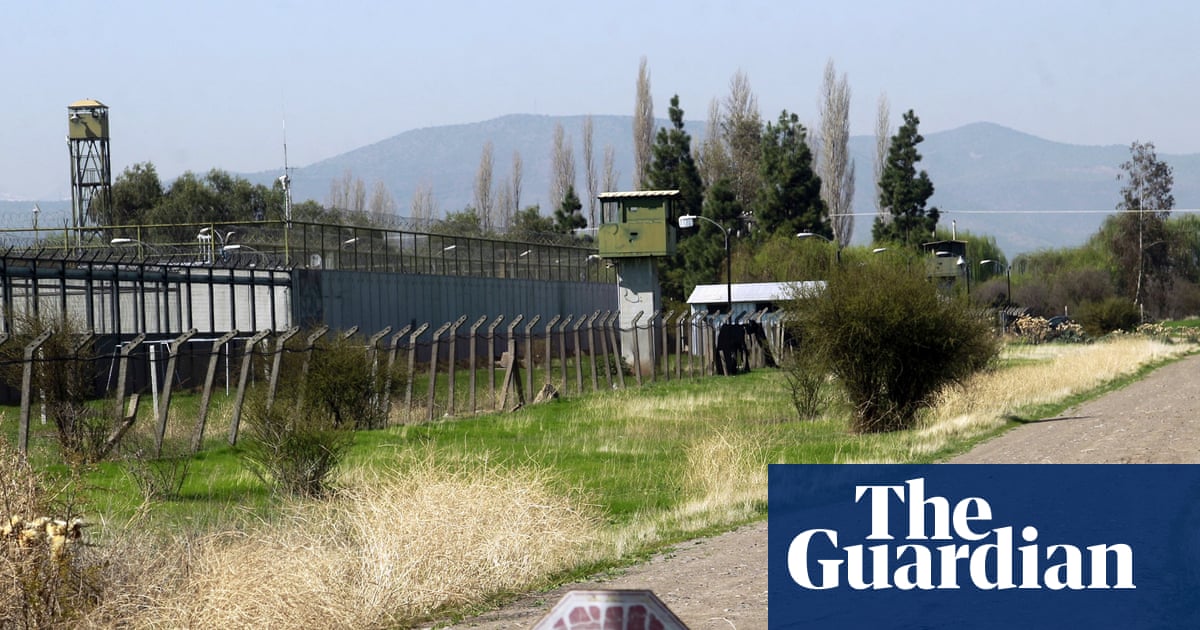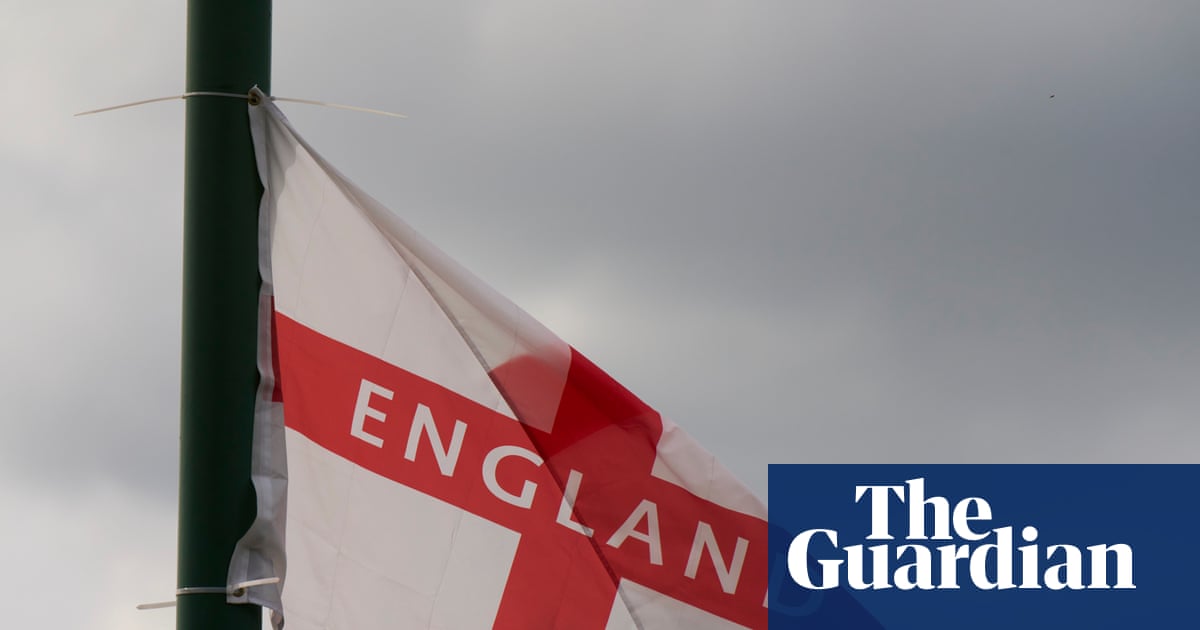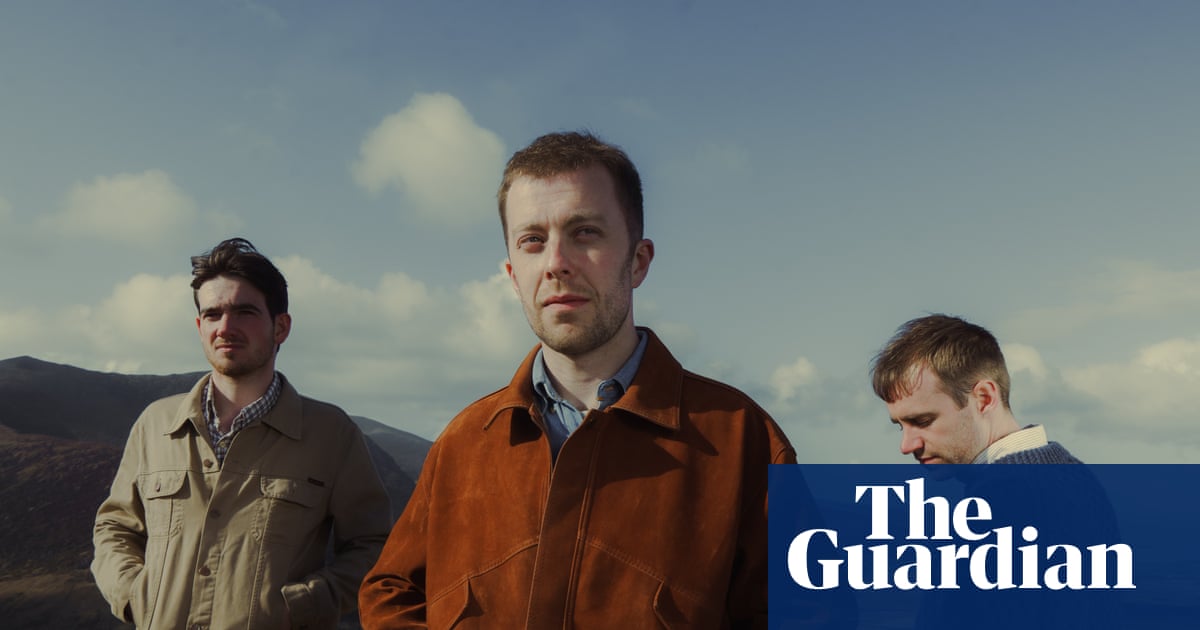Where is the finest mountain panorama in the UK? As a nine-year-old I was taken up Yr Wyddfa (Snowdon) and told it was the best. Even in those days, it was a struggle to see much except the backs of other people. The following summer Scafell Pike got the same treatment and the next year we climbed Ben Nevis. I disagreed on all counts. For me, Thorpe Cloud in Dovedale was unbeatable, despite it being under a thousand feet tall. What convinced me was the diminutive Derbyshire peak’s shape: a proper pointy summit with clear space all around, plus grassy slopes that you could roll down. The champion trio could not compare.
This panorama question is in my mind as I begin hiking up Slieve Donard, Northern Ireland’s highest peak (at 850 metres), but a mountain often forgotten by those listing their UK hiking achievements. And a proper peak it is too, with a great sweeping drop to the sea and loads of space all around, guaranteeing, I reckon, a view to beat its more famous rivals.
Slieve Donard’s relative obscurity outside of Northern Ireland is not difficult to understand. During the Troubles, visitor numbers plummeted and many locals gave up country walks. “We never went to the mountains,” one tells me, from Belfast, which is only an hour away to the north. “A road sign replaced with a sniper image is not very welcoming.”
Since that tragic period, the Mourne Mountains have made a terrific comeback, appearing in several episodes as parts of Westeros (along with other locations in Northern Ireland) in the Game of Thrones TV series.
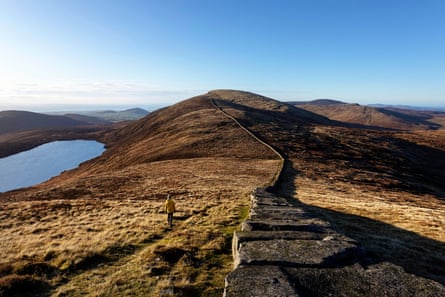
I set off from the eastern side, at a spot called Bloody Bridge – named after a massacre in the 1641 rebellion – where there are crystal clear pools in the river before it tumbles into the sea. The path steadily racks up, passing through a quarry then reaching a saddle at over 500m, where a massive stone wall heads directly up the mountain. This is the Mourne Wall, a 22-mile miracle of human labour, crossing a total of 15 peaks in the range. It was constructed between 1904 and 1922 to keep sheep out of the central Mournes, where several important reservoirs supplying Belfast were located. Now it’s the site of an annual race and a handy landmark on misty days. It’s also a stiff climb. I deliberately avoid checking the view: it’s going to be magnificent.
The maximum distance you can see from any peak can be roughly calculated by multiplying the square root of the height in metres by 3.57. That, however, is not necessarily the final answer. Distant peaks beyond the horizon will poke their tops up and variability in light refraction around the Earth means the maximum distance can sometimes be extended significantly. The official record for a ground-to-ground distance view is 300 miles, between two Argentinian mountains in 2023. My own record was a glimpse of Monte Cinto in Corsica from the Alpes-Maritimes, around 155 miles away.
I pause on the climb, puffing a bit, and bang the numbers into my phone’s calculator. At 850m, Slieve Donard’s potential view distance is around 65 miles, which should mean that most elements of the British Isles are visible on a blue-sky day like this one.
I reach the summit and climb over the Mourne Wall to stand next to the bronze age cairn. I look east. Nothing. No Scafell Pike or Yr Wyddfa, not one bit of Scotland, or the Isle of Man either. Sea haze, the curse of the hiker who didn’t get up early, is the problem, particularly frustrating on an otherwise clear day. Having said that, it is a fabulous summit, perched high above the rest of the Mournes, with superb views south and west over the whole of County Down and on into the Republic of Ireland.
I come down via the Glen River, another sparkling stream that leads me right back into the town of Newcastle, where I go directly to the beach and dive in. The view might have failed, but where else can you start by the sea, climb the highest peak, and finish four or five hours later with a sea dip?
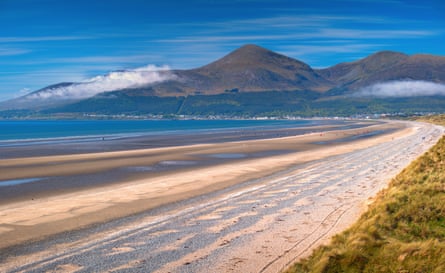
A quick change and I head for the Percy French Restaurant in the Slieve Donard Hotel. The front door, I’m told, has a Game of Thrones connection, but it’s really Percy French that intrigues me. An Irish songwriter and wit, French was one of those characters that light up their age. A contemporary of Oscar Wilde and WB Yeats, he regularly performed in Newcastle in the late 19th century and wrote the song The Mountains o’ Mourne, but never achieved much fame outside Ireland. There’s a bronze bust of the man on a side table, and I resolve to take one of his comic couplets as my motto in the quest for the finest panorama. “I’m not as bold as lions but I’m braver than a hen/And he that fights and runs away will live to fight again.”
Next day my goal is Slieve Binnian, at 747m the third highest peak in the range, and arguably the most beautiful. It’s another blue sky, so I am hopeful for fine views.
The track to the summit follows the Mourne Wall the entire distance (about two miles) and at the top I see why locals favour this peak: the summit and ridge are lined with stunning towers of granite, the Back Castles. I scramble up to the highest point. Sea haze. Loads of the stuff, a thick purple porridge all across the eastern horizon. Slieve Donard to the north-east is impressive and the panorama of the Mourne Mountains could not be bettered, but I’ve missed that 360 once again.
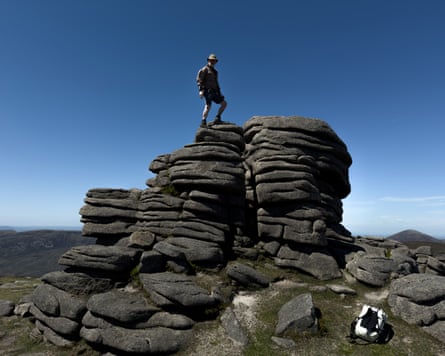
I head down the coast to the town of Rostrevor, a place whose dramatic setting inspired the writer CS Lewis to dream up the world of Narnia. “I have seen landscapes,” he wrote, “notably in the Mourne Mountains and southwards which under a particular light made me feel that at any moment a giant might raise his head over the next ridge.” In the Kilbroney Park, next to the town, there’s a good cafe, Synge and Byrne, and a Narnia trail. The town itself boasts a fine high street and some stalwart traditional pubs, one of which I choose for a post-panoramic failure pint.
I ask the barman if the undertaker’s business next door is part of the pub. “It used to make the wakes easy to organise,” he laughs. “But it’s closed down now. Mind you, we kept plenty of ghosts. There’s one who throws things, but is rarely seen.” Like England, Scotland and Wales, I reflect.
Next day is my last chance. The neighbour to my cottage advises on trying Knockchree, a hill of Thorpe Cloud dimensions at 306m. “It stands a bit separate and that makes for a lovely view.” Exactly what my nine-year-old self understood. But my calculator says capable of only a 37-mile range.
Cuckoos and stonechats are calling as I make the climb through pine plantation then up heathland. At the summit I sit down. A magnificent panorama of fields and Mourne Mountains is spread all before me in vivid colour and the sea horizon is perfectly clear. I think I can make out the summit of Snaefell on the Isle of Man, a full 60 miles away, which is a triumph, but England, Scotland and Wales have certainly ceased to exist. There are, however, two ancient kingdoms within my grasp: Westeros and Narnia, and they will do.
Accommodation was provided by Sykes Holiday Cottages, which has various properties in the Mournes area, including Carol Cottage, which sleeps up to eight, from £727 for three nights. Stena Line ferries sail to Belfast twice daily from Liverpool and six times daily from Cairnryan (near Stranraer). Return fare with car from £149

 3 months ago
73
3 months ago
73

















